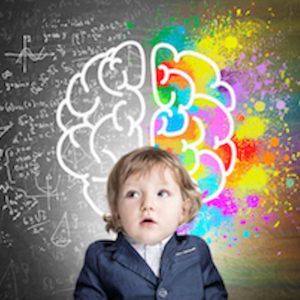What is the science of learning? How do people learn? Do we really only use 10% of our brains? Discover the myths you may have heard about how people learn best, and the facts you may have missed.
What is Learning?
To understand how people learn, we first need to identify what “learning” really is. Of course, the definition of learning can vary widely—but in general terms, it can be described as the process of acquiring and understanding new information.
Learning happens all the time, whether we’re conscious of it or not. Each time we find ourselves in a new situation, we learn from it—whether we’re sitting down to tackle a challenging new math problem, or interacting with another person for the first time.
Learning is an integral part of what it means to be human; it keeps us thriving. So what exactly is true—and what’s not—about learning?
Learning: The Myths
Learning Myth #1: Kids’ minds are “Blank Slates.”
For a long time, it was a common belief that all children start from the same place when it comes to learning—at zero—and that it was up to adults to “fill” their heads with knowledge.
But as we now know, brains come equipped with a lot of learning tools already; for example, the predisposition to distinguish between faces, recognize language, and learn numbers.
Learning Myth #2: We learn better according to our own “Learning Styles.”
While some people may prefer to learn in certain contexts, there’s actually no evidence to suggest that some people learn better through reading, listening, moving, or any other so-called “learning style.”
Instead, learning is all about how we make connections and store new information in the brain—but more on that later.
Learning Myth #3: People have either a “Left Brain” or a “Right Brain” personality.
When scientists began to discover that different areas of the brain seem to be responsible for certain functions, the implications were exciting. Finally, we could map out everything our brains can do! But as we learn more about how the brain works, it’s becoming clear that things aren’t really that simple.
And, while we all have aspects of our personalities that dominate over others, there’s no evidence to suggest that the left and right hemispheres of the brain have anything to do with it.
Learning Myth #4: We only use 10% of our brains.
Oh, what an understatement! Contrary to this common myth, every part of our brain works hard to keep us learning, growing, and thriving.
Science of Learning: The Facts
Learning Fact #1: The brain is always changing.
Through a process called neuroplasticity, our brains are constantly being rewired. The pathways created by our neurons get stronger each time they are used, but new pathways can always be created—which means we have the amazing power to change our brain!
Learning Fact #2: We learn better when information is meaningful to us.
Whether you call it relevance, connection, or context, it matters whether or not we care about what we’re learning. If it feels easier to learn a skill you enjoy doing, that’s because it is!
For some educators, this begs the question: How do I get my students to care? It’s a fair question, as you can’t expect every topic to be personally relevant to all students.
However, recent research has shown how a personal connection to the teacher can also be an important factor in how well information sticks. All the more reason to build a positive relationship with your students!
Learning Fact #3: We lose information that we don’t use.
Yes, it’s true: no matter how much rote memorization we use before a big test, all that knowledge will be lost in time if we don’t put it to any further use.
Our brains are super efficient learning machines, and they won’t hesitate to throw out any information that isn’t useful in order to make room for something that is. It’s why reviewing information is so important, and why teaching is the best way to learn!
Learning Fact #4: We don’t know all the facts!
There’s still so much we don’t understand about the brain and how it works. While new research is being conducted and new conclusions reached every year, the real truth is that nobody really knows the truth!
As with any form of science, all learning theories run the risk of being disproven by new discoveries at any moment. My solution? Don’t get attached to any one school of thought, and be open to new possibilities—there are so many things we still have to learn.
Want to learn more about how learning takes place in the brain and beyond? Stay tuned for Part 2, coming up next!
Check out Rosie’s article on Social-Emotional Learning for insight and tips to better inform your teaching!



